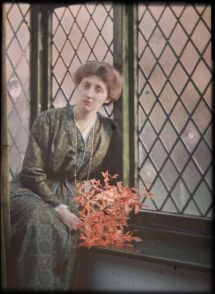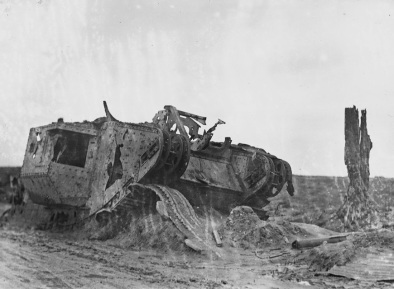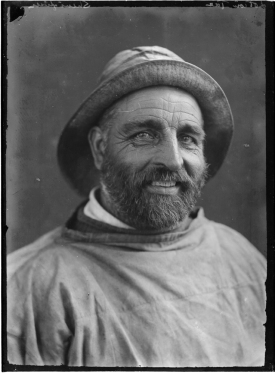
Autochome self-portrait, early 1910s
Olive Edis was a Norfolk photographer active between 1900 and 1955.
Mary Olive Edis, known as Olive, was born on 3rd September 1876, the daughter of a successful London doctor. She took up photography in 1900, after being given her first camera in 1900 by her cousin Caroline, who was to become the subject of Edis’ first photographic portrait. In 1905 Edis and her younger sister Katharine moved to Sheringham, and set up their first photographic studio together.
Katharine left the studio when she married, but Olive continued to work as a professional photographer until her death in 1955, eventually opening studios in London, Cromer and Farnham, Surrey. Over the course of her career she photographed a huge cross section of society, from local fishermen and their families to royalty, including George VI, and influential figures such as author Thomas Hardy. She also photographed members of the suffagette movement, including Emmeline and Christabel Pankhurst.
Edis was also was a pioneer of new photographic techniques, and was one of the first people in the country to use the Lumiere Brothers’ autochrome colour process professionally. She even designed and patented her own diascope, a special viewer for autochomes, which are best viewed with back-lighting. She was also one of the first women to be accepted as a Fellow of the Royal Photographic Society.

Wrecked tank on the Menin Road, 1919
In 1918, Edis was commissioned by the Imperial War Museum to photograph women’s war work in Europe, and despite her trip being delayed due to the precarious military situation, and some opposition to sending a woman to photograph a war zone, in March 1919 she embarked on a month long journey around France and Belgium with Lady Norman, Chair of the Women’s Work Committee, in which she chronicled the lives of women working on the front lines and the devastation that followed the Great War. She was the first British woman to be commissioned as an official war artist, and only the 5th official photographer to visit Europe to cover WW1. She kept a journal of her travels, which documents her journey through war-torn Europe. Many of these photographs, taken using a large glass-plate camera, now form part of the Imperial War Museum’s collection.
Other important commissions which she was offered over the course of her career include some of the first colour photographs of Canada, which were taken as part of a promotional campaign for the Canadian Pacific Railway, and interior shots of 10 Downing Street.

‘Lotion Tar’ Bishop, a North Norfolk fisherman
Edis was known for her signature style, which used natural light and shadow to create striking portraits. She also had an instinctive ability to get the best from her subjects, putting them at their ease and capturing a true, informal likeness. She treated all her subjects with the same respect, and put her success down to “being in sympathy” with her sitters.
Cromer Museum holds the largest collection of her work, which includes prints, autochromes, glass plate negatives, cameras and ephemera. Collections of her work are also held at the Imperial War Museum, the National Portrait Gallery, the National Media Museum and the Harry Ransom Humanities Research Centre in Austin, Texas.
Fishermen & Kings: The Photography of Olive Edis by Alistair Murphy and Elizabeth Elmore, the first book dedicated solely to Olive Edis’ life and work, is available from the gift shops at Norwich Castle Museum & Art Gallery and Cromer Museum. You can order a copy by post by contacting Maria Wong, Retail Manager, at maria.wong@norfolk.gov.uk or by phoning Norwich Castle on 01603 495897. A member of our Visitor Services team will be able to connect you to the shop.